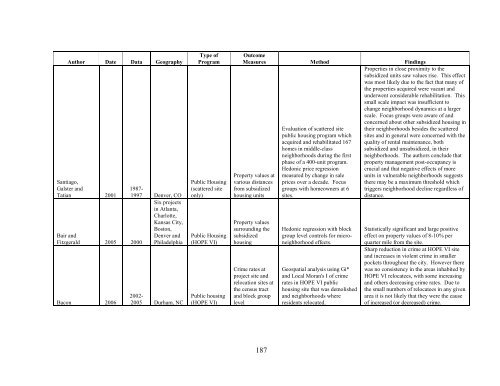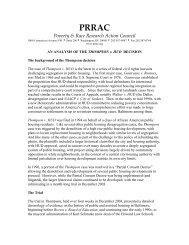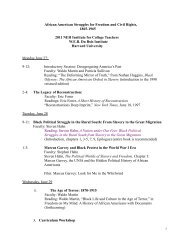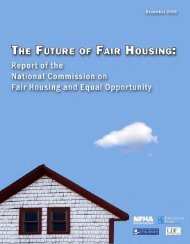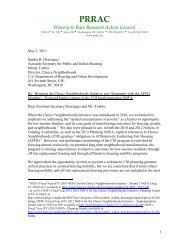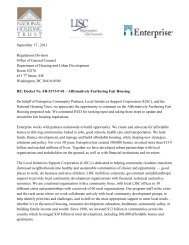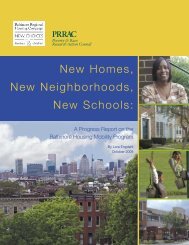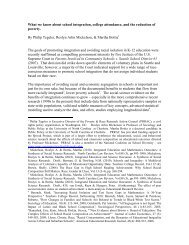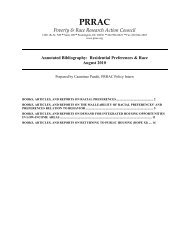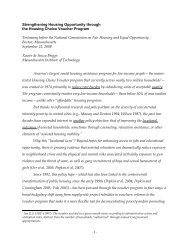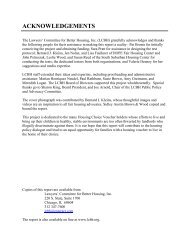The Spatial Concentration of Subsidized Housing - Poverty & Race ...
The Spatial Concentration of Subsidized Housing - Poverty & Race ...
The Spatial Concentration of Subsidized Housing - Poverty & Race ...
Create successful ePaper yourself
Turn your PDF publications into a flip-book with our unique Google optimized e-Paper software.
Author Date Data GeographySantiago,Galster andTatian 2001Bair andFitzgerald 2005 2000Bacon 20061987-1997 Denver, COSix projectsin Atlanta,Charlotte,Kansas City,Boston,Denver andPhiladelphia2002-2005 Durham, NCType <strong>of</strong>ProgramPublic <strong>Housing</strong>(scattered siteonly)Public <strong>Housing</strong>(HOPE VI)Public housing(HOPE VI)OutcomeMeasures Method FindingsProperty values atvarious distancesfrom subsidizedhousing unitsProperty valuessurrounding thesubsidizedhousingCrime rates atproject site andrelocation sites atthe census tractand block grouplevelEvaluation <strong>of</strong> scattered sitepublic housing program whichacquired and rehabilitated 167homes in middle-classneighborhoods during the firstphase <strong>of</strong> a 400-unit program.Hedonic price regressionmeasured by change in saleprices over a decade. Focusgroups with homeowners at 6sites.Hedonic regression with blockgroup level controls for microneighborhoodeffects.Geospatial analysis using Gi*and Local Moran's I <strong>of</strong> crimerates in HOPE VI publichousing site that was demolishedand neighborhoods whereresidents relocated.Properties in close proximity to thesubsidized units saw values rise. This effectwas most likely due to the fact that many <strong>of</strong>the properties acquired were vacant andunderwent considerable rehabilitation. Thissmall scale impact was insufficient tochange neighborhood dynamics at a largerscale. Focus groups were aware <strong>of</strong> andconcerned about other subsidized housing intheir neighborhoods besides the scatteredsites and in general were concerned with thequality <strong>of</strong> rental maintenance, bothsubsidized and unsubsidized, in theirneighborhoods. <strong>The</strong> authors conclude thatproperty management post-occupancy iscrucial and that negative effects <strong>of</strong> moreunits in vulnerable neighborhoods suggeststhere may be a maximum threshold whichtriggers neighborhood decline regardless <strong>of</strong>distance.Statistically significant and large positiveeffect on property values <strong>of</strong> 8-10% perquarter mile from the site.Sharp reduction in crime at HOPE VI siteand increases in violent crime in smallerpockets throughout the city. However therewas no consistency in the areas inhabited byHOPE VI relocatees, with some increasingand others decreasing crime rates. Due tothe small numbers <strong>of</strong> relocatees in any givenarea it is not likely that they were the cause<strong>of</strong> increased (or decreased) crime.187


